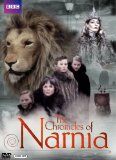“Things never happen the same way twice.”
C.S. Lewis created an incredibly imaginative world when he wrote his Chronicles Of Narnia. The stories were an escape, of sorts, from a war-torn Europe. They integrated elements of Christianity in an effort to provide a semblance of hope in the form of a children’s fairy tale. And like all such tales, the world of Narnia was first and foremost a place of magic and bewilderment. It was a place where fantastic creatures of both good and evil thrived, living out epic lives of adventure. It was also a world where only children could enter. The stories became hugely popular, first in England, and eventually around the globe. Since that time we live in a different planet than the one Lewis was attempting to offer a respite from. Still, the images and ideals are remarkably relevant today. With such sweeping grand adventures and marvelous creatures, it’s no surprise that the franchise has found its way into films. The only real mystery is why it took so long. Perhaps it was necessary for the technology to finally catch up, providing a far more realistic and captivating experience. Some credit must also go to the enormous success of the Harry Potter and even the Lord Of The Rings films. With the investment of time and money required to bring such a world into existence on celluloid, there must be some reasonable assurance that, if done correctly, there was a large enough profit to be found. These earlier, and continuing, franchises have overwhelmingly proven that point. It was only a matter of time before the studio that practically invented movie magic would find such a place as Narnia and claim it for their own. When you combine these extraordinary histories together, can there be any question as to the results?
But long before even the Potter or Rings films made a big-budget Narnia possible, there was a BBC production that brought the series of books to life for television back in 1988 to 1990. While the episodes did not have the huge budget and time that the recent studio versions have brought, they did a remarkable job of bringing the real magic of the stories to life. Of course, there are obvious f/x situations that might make a jaded viewer a little less able to buy into the fantasy. Most of the animal characters are actors in fur suits with makeup faces. They walk upright. This allows the facial expressions and the performance of the character to really come through. Certainly, there are serious limitations here. I got the sense that I was more watching a stage production rather than a film. Other characters are either standard hand-drawn animation or robotics. Aslan looks like a giant stuffed lion for the most part. But the puppeteers are able to add some wonderful expression to his facial movements. There’s a gentleness and a wisdom in the character that works quite well.
The cast includes four child actors who played the parts well enough. I have to admit I wasn’t much of a fan of Sophie Wilcox as Lucy. She’s fine enough as an actress, but her voice grated quite a bit. Doctor Who’s best Doctor Tom Baker fills a small role as a swamp wiggle who helps the children save a prince of Narnia. The stories that are included here are The Lion, the Witch, and the Wardrobe, Prince Caspian, The Dawn Treader, and The Silver Chair. The stories are divided into half-hour episodes with most of the books getting 6 episodes each. Prince Caspian only has 2.
While this might be a dated production today, there is much here to recommend, if you can forgive the low budget and look for something much deeper. I suspect this might actually be more in line of what Lewis might have intended for his stories. It’s ambitious and never really lets you down. Not as long as you still have a little magic within yourself.
Video
Each episode is presented in its original full-frame broadcast aspect ratio. Again, the limitations of the show’s age and budget mean you aren’t going to get a very good picture. It looks rather video in nature, and after a couple of dubs at that. Everything is soft and colors appear rather drained. There is too much compression artifact. Less episodes per disc were in order here.
Audio
The Dolby Digital 2.0 is completely dialog. There are no dynamic sound-design things going on at all. Even though this is some dramatic material, there is always that soundstage ambiance to the whole production. It helps to bring out that live-stage feel I was talking about earlier.
Special Features
Past Watchful Dragons: (29:07) This is the typical behind-the-scenes look. There’s footage from an earlier black & white version of the story. You get to go behind the scenes and see the sets and locations up close. It completely deals with the first story.
Interviews: There are several interviews with cast and crew mostly on British television. It includes a 2003 reunion of the now grown-up children.
Final Thoughts:
Let’s be perfectly honest here. The release of the big budget films has made it far more difficult for this version to satisfy an audience. I’m not sure that it can, really. That’s unfortunate. This version had a lot of heart, and the limitations did not exist in their imaginations. I fear, however, that most of the current audience out there will find it hard to stay with this mini-series without pointing out all of the ways it doesn’t shine next to the recent films. I hope you might consider giving these versions at least a chance. After all, magic isn’t always about huge special f/x. “With magic, you can’t know. You can only believe it, or not.”





